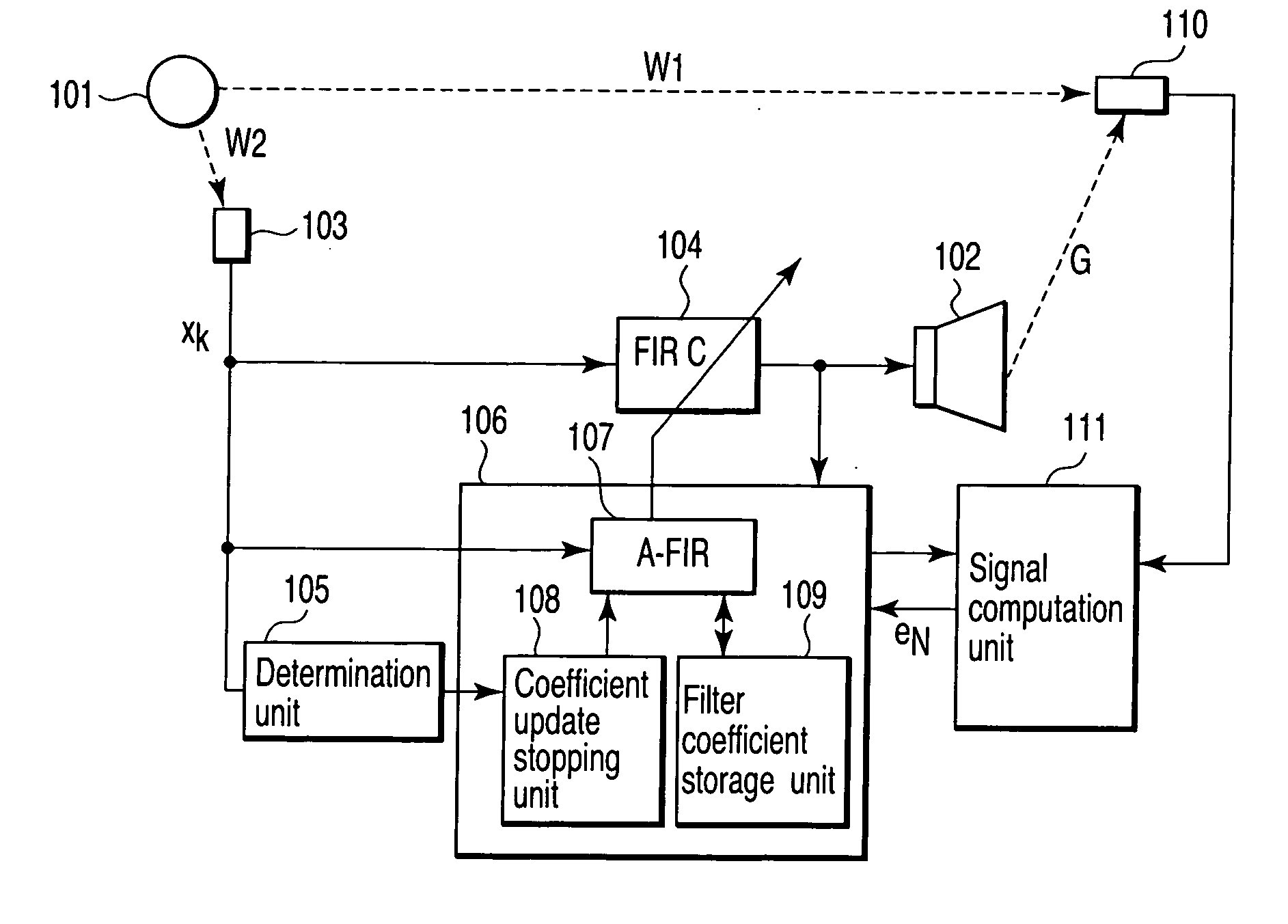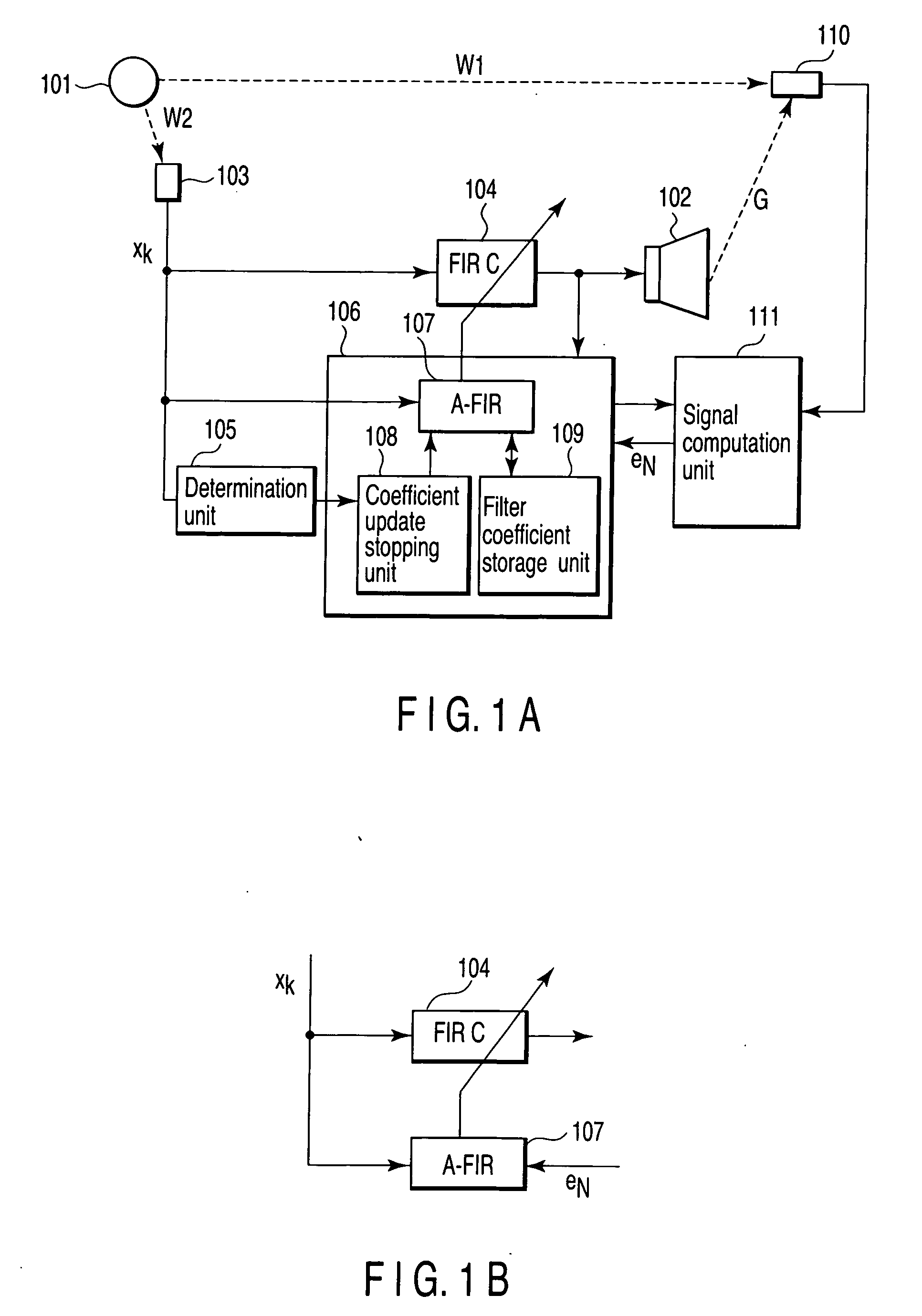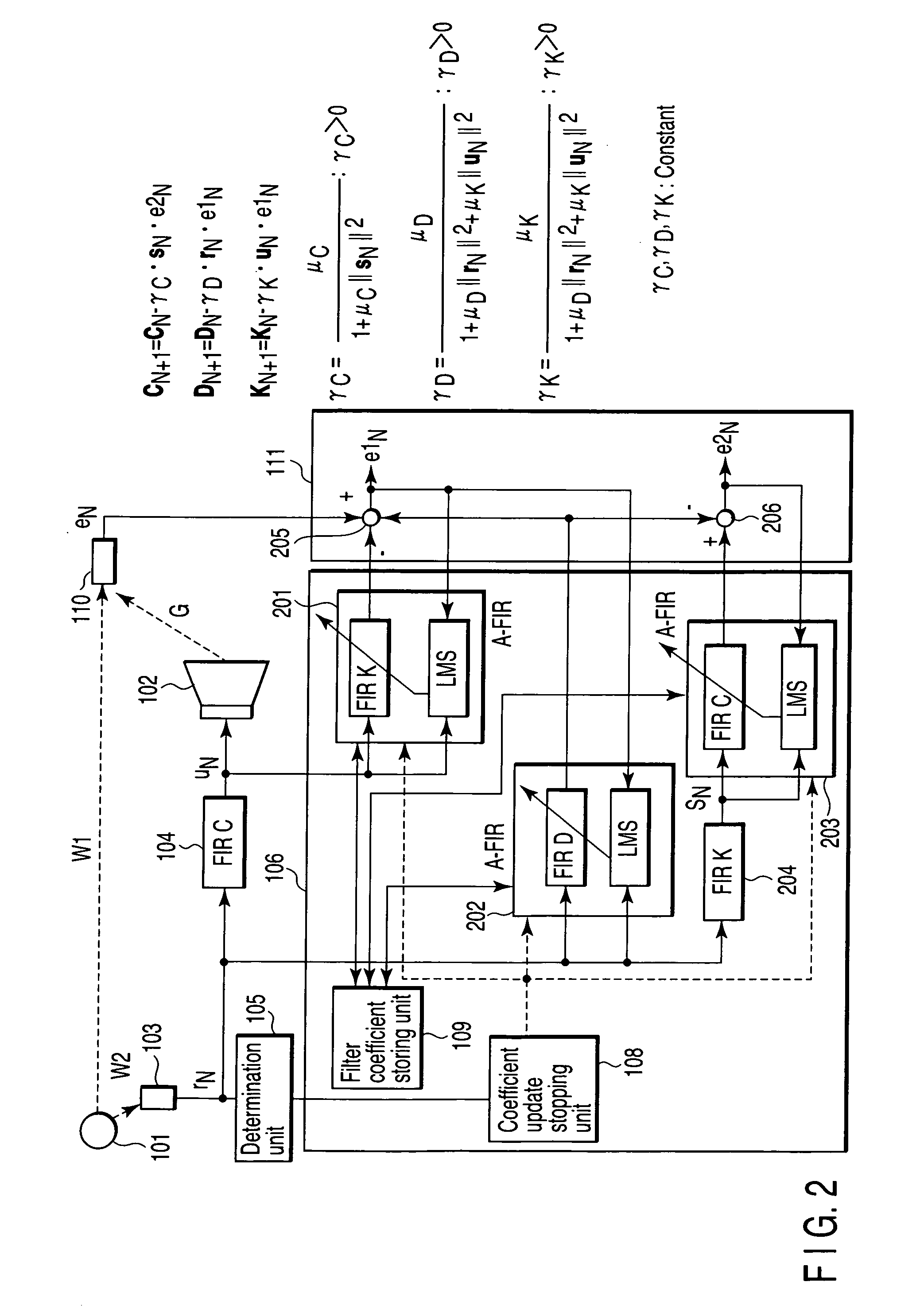Active noise-reduction control apparatus and method
a control apparatus and noise reduction technology, applied in the field of active noise reduction, can solve the problems of destabilization of control, large time requirement for amplitude convergence, and degradation of control effect, and achieve the effect of reducing white noise, reducing white noise, and reducing the noise of snoring
- Summary
- Abstract
- Description
- Claims
- Application Information
AI Technical Summary
Benefits of technology
Problems solved by technology
Method used
Image
Examples
first embodiment
[0054] Referring to FIG. 1A, an active noise-reduction control apparatus according to a first embodiment of the invention will be described.
[0055] The active noise-reduction control apparatus of the first embodiment comprises a control-sound source unit 102, reference signal generator 103, digital filter arithmetic unit 104, determination unit 105, filter coefficient updating unit 106, error microphone 110 and signal computation unit 111. The filter coefficient updating unit 106 includes an adaptive filter unit 107, coefficient update stopping unit 108 and filter coefficient storage unit 109. The active noise-reduction control apparatus of the first embodiment is used to reduce a to-be-reduced noise (target noise) 101 emitted from a sound source.
[0056] The reference signal generator 103 receives the target noise 101, generates a reference signal based on the target noise 101, and supplies the reference signal to the digital filter arithmetic unit 104, determination unit 105 and fi...
second embodiment
[0096] Referring to FIG. 7, an active noise-reduction control apparatus according to a second embodiment of the invention will now be described.
[0097] The active noise-reduction control apparatus of the second embodiment differs from that of the first embodiment only in the internal structure of the filter coefficient update unit 106. The filter coefficient update unit 106 of the second embodiment comprises an adaptive filter unit 107 and coefficient initialization unit 701.
[0098] The coefficient initialization unit 701 initializes the coefficient of the digital filter arithmetic unit 104 when a change in the level of the reference signal output from the reference signal generator 103 falls outside the threshold value range. Namely, in the case of, for example, such a general adaptive filter as shown in FIG. 1B, the coefficient C of the control filter is once initialized to zero. See, for example, the above-mentioned equation (Eq. 1).
[0099] As described above, the second embodime...
third embodiment
[0111] Referring to FIG. 17, an active noise-reduction control apparatus according to a third embodiment of the invention will be described.
[0112] The active noise-reduction control apparatus of the third embodiment differs from that of the first embodiment only in the internal structure of the filter coefficient update unit 106. The filter coefficient update unit 106 of the third embodiment comprises a filter coefficient adjustment unit 1701 and estimated-error computation unit 1702.
[0113] The estimated-error computation unit 1702 computes an estimated error EE based on a reference signal from the reference signal generator 103 and an error signal from the error microphone 110. The estimated error EE is expressed by
EE=10 log10(Σe2 / Σd2) (Eq. 5)
where e is an error microphone signal, and d is a reference microphone signal.
[0114] The filter coefficient adjustment unit 1701 adjusts the prestored coefficient of the adaptive filter unit 107 based on the estimated error EE. As a re...
PUM
 Login to View More
Login to View More Abstract
Description
Claims
Application Information
 Login to View More
Login to View More - R&D
- Intellectual Property
- Life Sciences
- Materials
- Tech Scout
- Unparalleled Data Quality
- Higher Quality Content
- 60% Fewer Hallucinations
Browse by: Latest US Patents, China's latest patents, Technical Efficacy Thesaurus, Application Domain, Technology Topic, Popular Technical Reports.
© 2025 PatSnap. All rights reserved.Legal|Privacy policy|Modern Slavery Act Transparency Statement|Sitemap|About US| Contact US: help@patsnap.com



